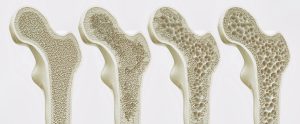Arthritis
of the Foot and Ankle
The term arthritis is used to describe painful and stiff joints. There are various reasons for the development of arthritis, but regardless of the type, the foot and ankle are perhaps over represented when comes to being affected. So, let’s explore some different kinds of arthritis, how they affect the foot and ankle, and how your podiatrist can help.
Osteoarthritis is caused by wear and tear on our joints thus it becomes more common with advancing age. It occurs as the cartilage that lines the joint becomes eroded to expose the underlying bone. This bone then thickens in attempt to protect itself from further wear, but in doing so can form spurs and irregularities that cause pain as they get in the way of joint movement. Being positioned under the body and having to bear its entire weight, it’s hardly surprising that the foot and ankle receive their share of this type of arthritis.
Inflammatory arthritis usually stems from an autoimmune response. In this type of arthritis something goes awry with the immune system and the body’s defences start attacking itself. Connective tissues are commonly the target of such a response hence it is the structures that help hold the joint together that are affected. A part from being painful in its own right, inflammation of the joint structure makes the joint unstable. This leads to abnormal patterns of wear and tear, so osteoarthritis becomes a common sequela. Rheumatoid arthritis is probably the most infamous kind of inflammatory arthritis. It attacks the peripheral joints, so the foot and ankle feature highly.
Metabolic arthritis arises when there is biochemical reason behind joint pain. The most prevalent type of this group is gout. If you have ever woken in the morning, and for no apparent reason your big toe feels like it’s been smashed with a sledge hammer then you probably have had a bad dose of it. Gout almost exclusively occurs in the foot, most commonly in the first toe joint as in this example. However, it pops up time to time in other foot joints and also in the ankle. Gout occurs when uric acid accumulates in the blood to form tiny crystals. These crystals settle inside the small joints of the foot and trigger an intense inflammatory reaction. As the body wages war on the crystal, there are innocent casualties, in this case the joint itself.
Infective arthritis, as the name suggests is caused by an infection. Bacteria can be introduced into joints by two ways. It can be systemic, in which bacteria (say from a throat infection) enters the blood stream and settles in a joint where blood flow hits a slow point. Otherwise, it can be directly introduced from an external source such as a penetrating wound, surgery or skin ulcer that has reached the underlying joint. Whatever the source, joints of the foot provide a perfect place to house bacteria due to their inherently slower circulation. The ensuring infection can severely damage the joint.
Post traumatic arthritis results from damage to a joint due to physical damage to its bony or soft tissue structures. Bone fractures and ligament ruptures can alter the alignment of joint surfaces causing accelerated wear. It’s essentially osteoarthritis that has been fast-tracked, and is less dependent on age.
Whatever the type of foot or ankle arthritis, your podiatrist can help. Note however, that inflammatory, metabolic and infective arthritis first need special medical attention. But in any case, a podiatrist’s expert knowledge of foot and ankle can be applied to determine the best way of off-loading painful arthritic joints and improving function. This commonly includes the use of soft insoles to accommodate painful joints when weightbearing, and the prescription of foot orthoses (customised arch supports) to ease symptoms and help normalise walking.
By Craig Cheney – Physiotherapist & Podiatrist






